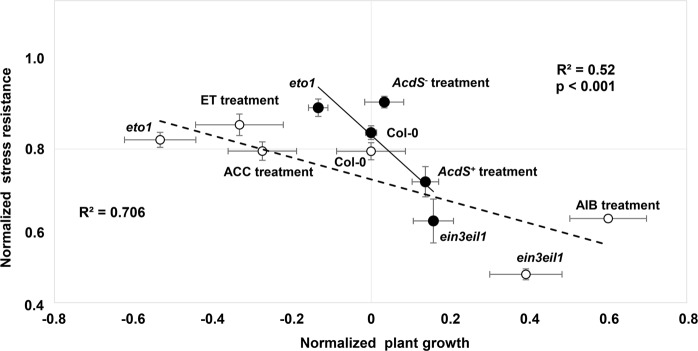Fig. 4.
Alterations of plant ethylene levels by microorganisms shifts Arabidopsis thaliana along growth–stress resistance tradeoffs. Growth and stress resistance in each treatment were normalized to Col-0 without microbial or chemical amendment as baseline. The X-axis shows plant growth, defines as shoot dry weight in the control, stress-free treatment. The Y-axis shows plant stress tolerance, defined as the ratio of shoot dry weight under cadmium stress relative to the control, stress-free treatment. Black line and closed symbols: pot experiment: Arabidopsis thaliana wild-type (Col-0) was inoculated with the ACC deaminase-producing Pseudomonas putida UW4, which reduces ethylene (Col-0 and AcdS+) or its isogenic ACC deaminase-deficient mutant, which causes an increase in plant ethylene (Col-0 and AcdS−). The effects of bacteria on plant growth and stress resistance are benchmarked to the most extreme available plant mutants leading to ethylene overproduction (eto1) or in the opposite virtually complete ethylene insensitivity (ein3eil1). Open symbols and dashed lines: results of an axenic experiment in which plant ethylene was manipulated by pretreatment with ethylene, its precursor ACC or the inhibitor AIB. Error bars show ± SE

